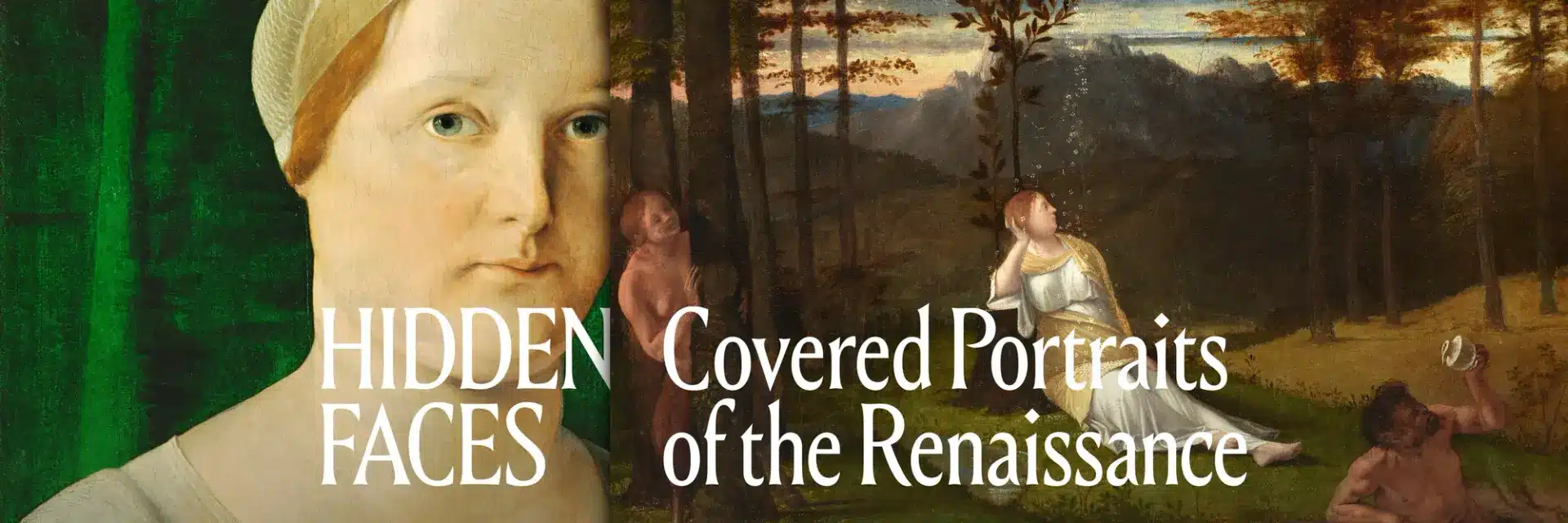A friend working at the Metropolitan Museum in Manhattan said recently that she had been instructed never to mention religion – an astounding directive given the depth of the museum’s holdings in Byzantine and European art, including The Cloisters in Fort Tryon Park in upper Manhattan, constructed with materials from actual abbeys in France and Catalonia. Despite such ludicrous directives, the Met continues to mount high-quality exhibitions reflecting aspects of Western civilisation.
Through its unique approach to the display of works by Renaissance masters, such as Hans Memling, Lorenzo Lotto and Titian, Hidden Faces: Covered Portraits of the Renaissance invites viewers to examine the hidden emblems and allegories that adorn the backs and covers of the era’s portraits. It challenges the typical consideration of paintings as two-dimensional, single-sided works hung on a wall.
Hidden Faces explores the Renaissance tradition of multi-sided or concealed portraits. The exhibition features roughly 60 Renaissance portraits from Italy and northern Europe that are divided chronologically into five sections by region, beginning with ancient secular and sacred art and followed by portraits from 15th-century northern Europe, 15th-century Italy and 16th-century northern Europe, and portable portraits.
To showcase the portraits’ reverse sides, Hidden Faces takes a compelling approach to its displays, and this is arguably the most intriguing part of the exhibition. Many of the works – rather than being hung on the galleries’ walls – are placed on pedestals or in glass vitrines at the centre of the galleries. These pedestals provide a 360-degree view of the works, offering a rare opportunity to see the paintings’ reverse sides and revealing how Renaissance artists used them to reflect or contribute to the portrayal of the person in the portrait. The four sections of Hidden Faces feature pieces from Italy and northern Europe during the 15th and 16th centuries, showcasing a variety of double-sided and covered portraits. The exhibition highlights the use of reverse sides or portrait covers to indicate the subject’s status or traits through emblems, like coats of arms, or allegorical paintings of various virtues. Particularly interesting is Hans Memling’s 1485 Portrait of a Man – a bust-length portrait of a man with his hands together in prayer, with a painted vase of irises on its reverse. The irises’ allusion to the Virgin Mary and the vase’s design referring to Jesus indicate the man’s devoutness.
Bernhard Strigel’s portraits of Margarethe Vöhlin and Hans Roth show the married couple facing each other in three-fourths profile, dressed in fine clothing, with aligned landscapes visible through windows behind them. But it is the more recent changes made to the portraits’ reverse sides that make them particularly compelling. While they originally featured painted versions of the subjects’ coats of arms, a museum’s collection sticker has been added to the back of Vohlin’s portrait, and both pieces have cradles – wood slats added in the 19th century to provide structural support. The backs of these portraits are not typically exhibited but become an important part of the work when shown in a vitrine. These details highlight how modern alterations can change our understanding of how double-sided works should be displayed.
Hidden Faces also features portraits with painted covers, such as Lotto’s 1505 Portrait of Giovanna de’ Rossi with Portrait Cover with an Allegory of Chastity. The portrait is a naturalistic, bust-length image of a woman in front of a green curtain – referencing the curtains that were traditionally used to cover private portraits. The cover juxtaposes a cupid showering a woman with flower petals and two satyrs, contrasting chastity with lust. As a result, the cover’s moralising theme conveys the chastity and virtue of the woman in the portrait. The inclusion of these works in Hidden Faces is also notable because they have been reunited from two different collections: the portrait is on loan from the Musée des Beaux-Arts de Dijon in France, and the cover is from Washington, DC’s National Gallery of Art.
The organisation of the paintings on the galleries’ walls can make it difficult to imagine how the portraits and their covers may have fitted together, or how two separate portraits were originally hinged together. However, Hidden Faces does include two animated reconstructions of covered portraits – one of Ridolfo Ghirlandaio’s La Monaca and its cover, the other of a mirror frame with two sliding shutters – both of which play in a loop on small screens mounted on the wall.
Hidden Faces presents viewers with a new perspective on Renaissance portraiture and encourages a consideration of the interactive, inventive nature of the era’s art. By displaying many of the portraits and portable pieces on pedestals, the exhibition subverts the usual understanding of paintings as immovable, permanent pieces mounted on walls, inviting viewers to explore the personalised and intimate ways that portraits were used during the Renaissance.
Hidden Faces: Covered Portraits of the Renaissance <em>is at the Metropolitan Museum, Manhattan, until July 7</em>



